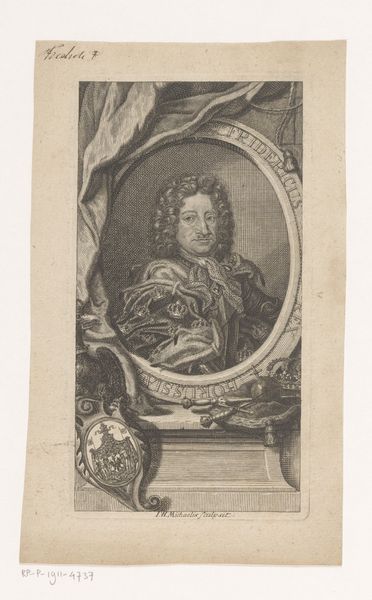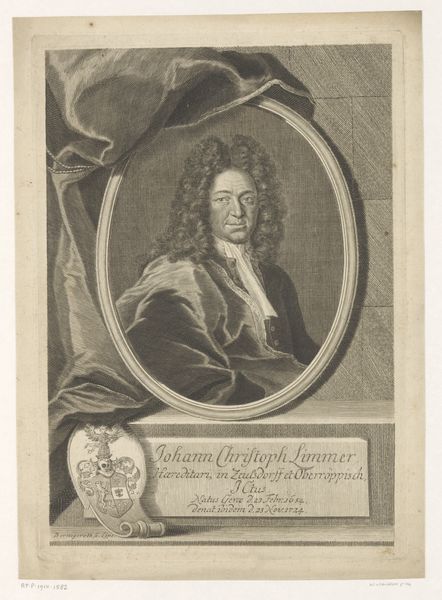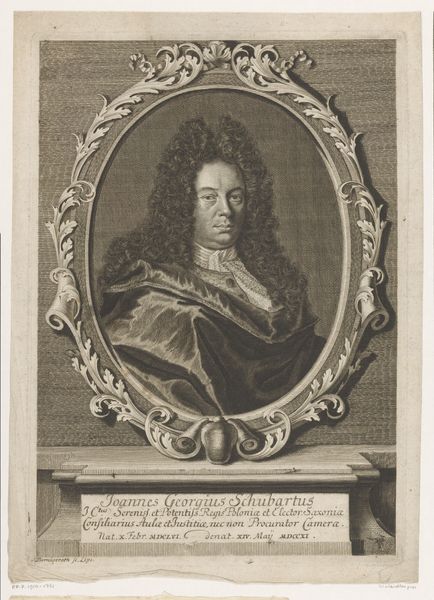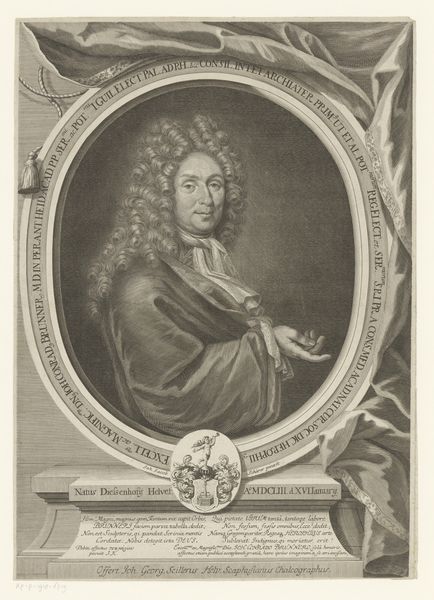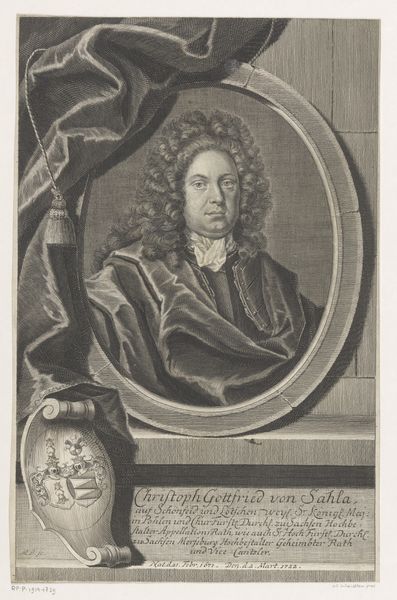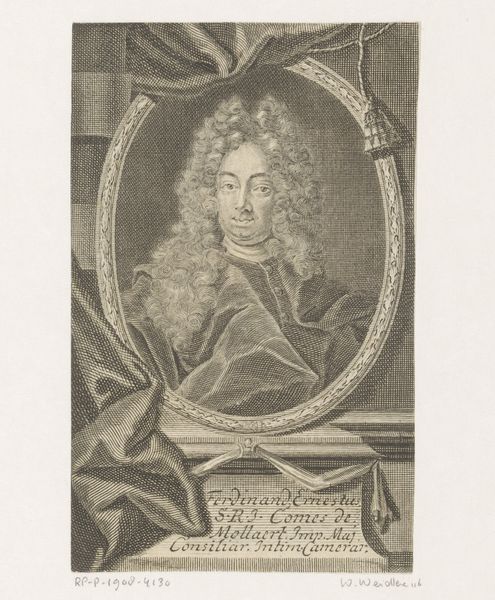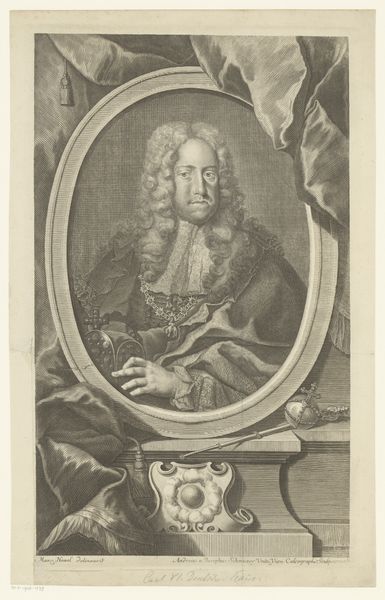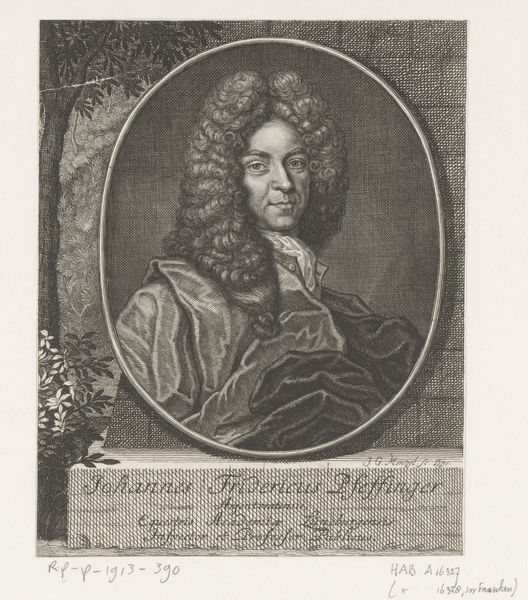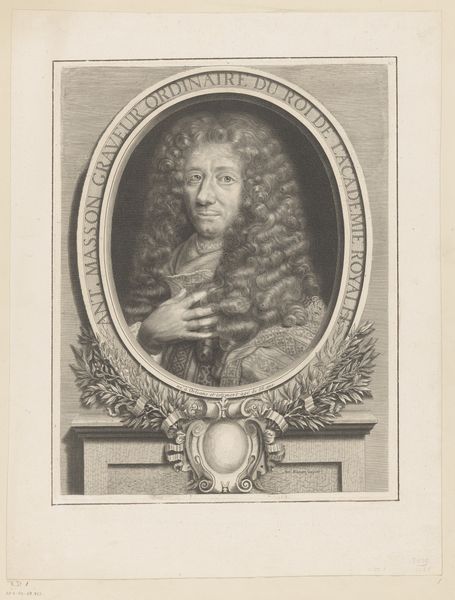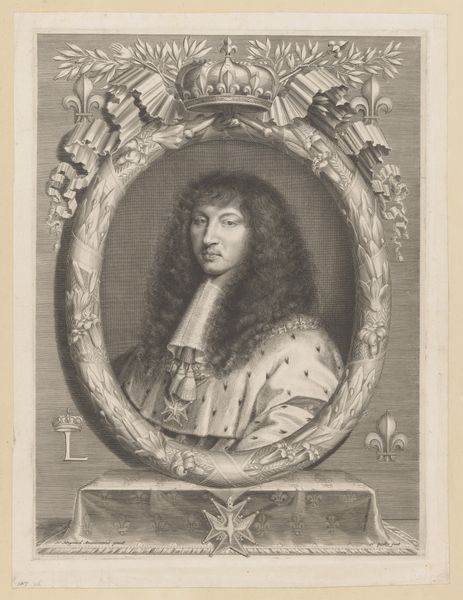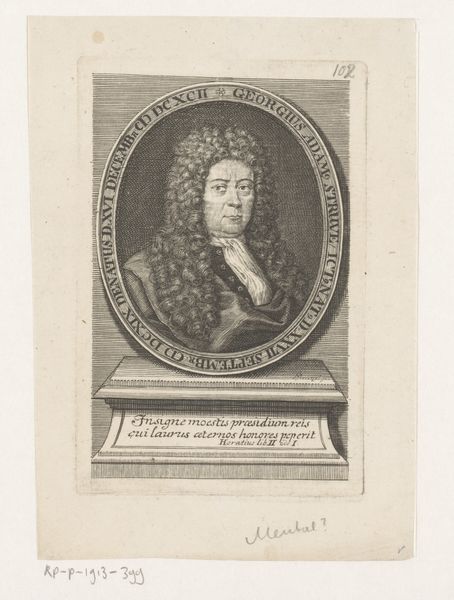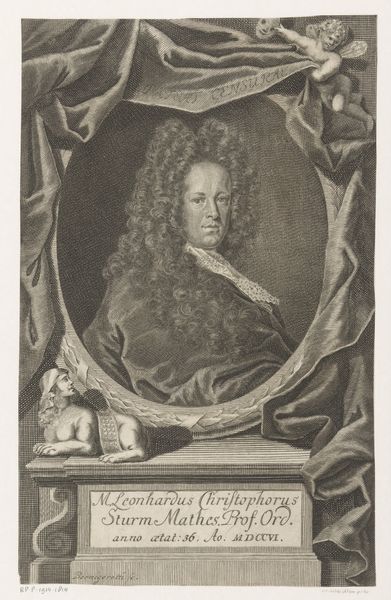
print, engraving
#
portrait
#
pencil drawn
#
baroque
# print
#
old engraving style
#
caricature
#
portrait reference
#
line
#
portrait drawing
#
engraving
Dimensions: height 315 mm, width 196 mm
Copyright: Rijks Museum: Open Domain
Editor: So, this is a portrait of Stephan Wlöme, made sometime between 1711 and 1733 by Martin Bernigeroth. It's an engraving, which gives it a very precise, almost photographic quality despite being from the Baroque period. I find it fascinating how a print can convey such a sense of individual personality. How do you interpret this work? Curator: This portrait is interesting when considering the societal role of portraiture during the Baroque period and its perpetuation of power structures. Wlöme, as a high-ranking member of the church and judiciary, is intentionally presented in a manner befitting his station. The elaborate frame, the flowing drapery, the very formal inscription—all contribute to the construction of an image of authority. How do you think the choice of engraving, as opposed to painting, plays into this? Editor: Well, engraving seems more reproducible, perhaps democratizing the image, but also solidifying a single, "official" likeness. The detail suggests meticulous control over the narrative being presented. Curator: Exactly. Consider the context of religious and political upheaval at the time. This isn't simply about immortalizing a man; it's about reinforcing the established order, using his image to project stability and piety amidst potentially challenging sociopolitical tides. Notice the contrast between the precision of the lettering versus the softer rendering of his face and hair. What does that communicate? Editor: I see. The lettering, being so crisp, is like a declaration, while the portrait is softer, more human. It is interesting how the material suggests that. So, beyond being just a likeness, it's a statement about power, faith, and perhaps a carefully constructed public persona. Curator: Precisely. By understanding the social function of portraiture and the symbolic language used here, we move beyond a simple image and recognize the complex intersection of art, power, and identity. Editor: I never considered how intentional such "small" portraits had to be!
Comments
No comments
Be the first to comment and join the conversation on the ultimate creative platform.

